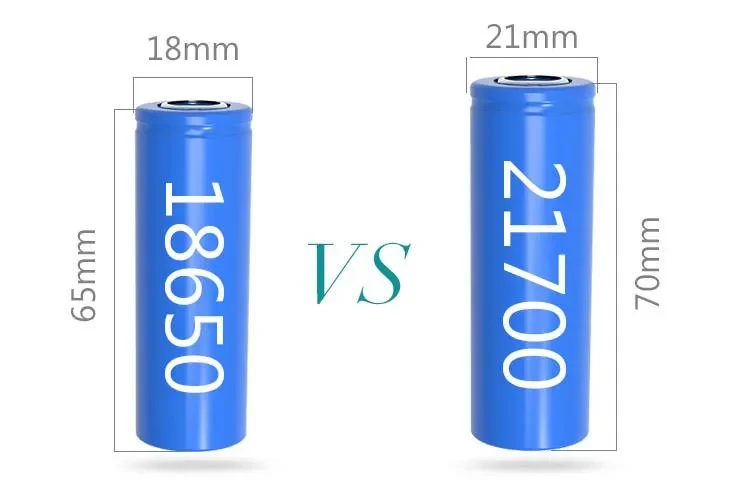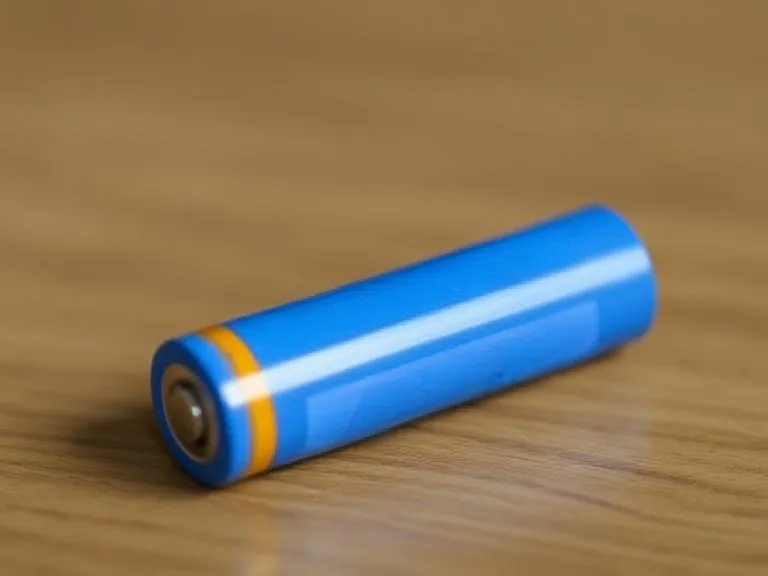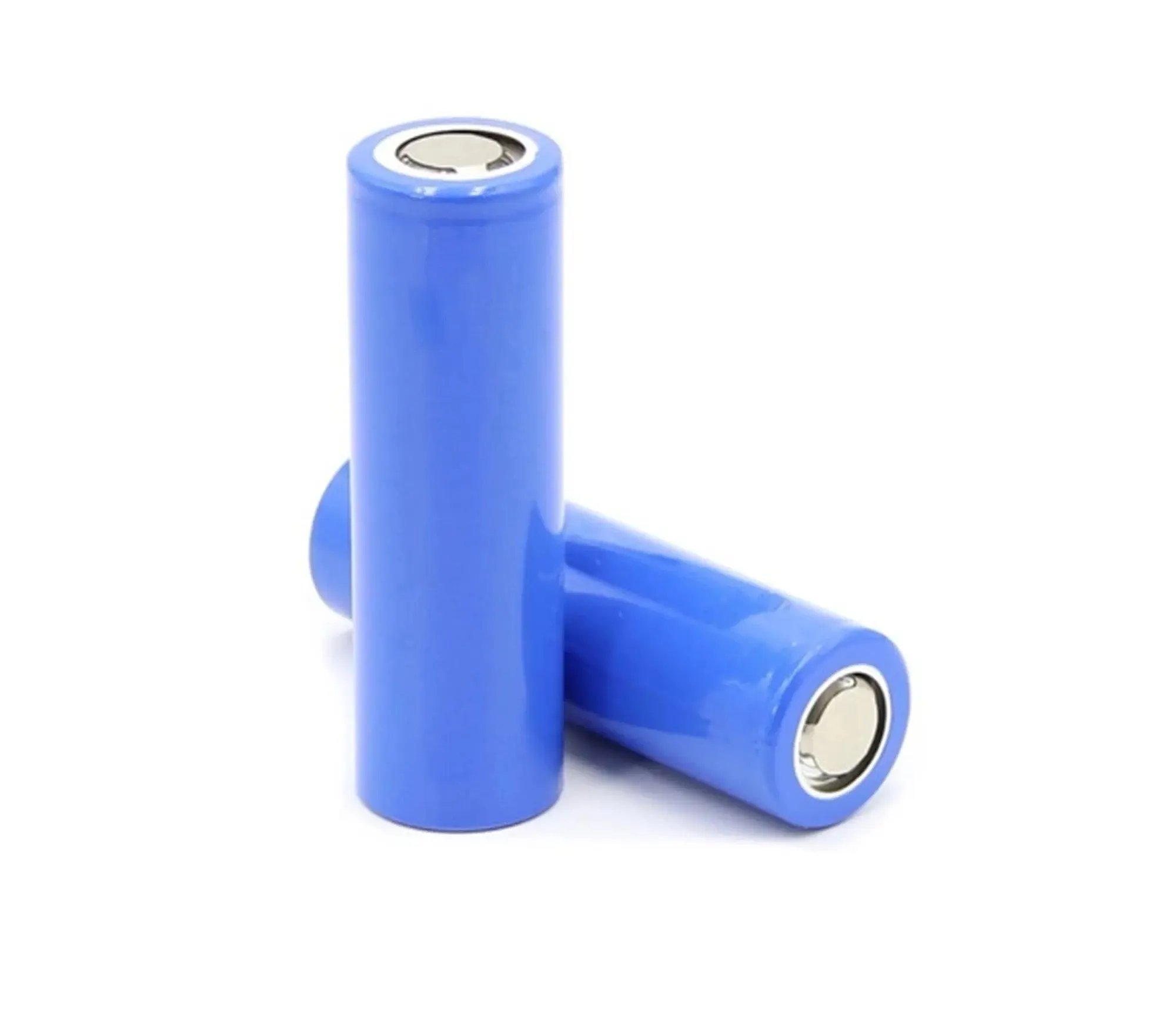Understand the differences and application scenarios between 18650 and 21700 batteries
This article provides a comprehensive comparison between the 18650 and 21700 lithium-ion batteries. The 18650 is known for its compact size, lower cost, and wide compatibility, making it ideal for portable devices like flashlights and laptops. In contrast, the 21700 offers higher energy density, greater capacity, and better thermal management, making it suitable for electric vehicles and high-performance tools. The article analyzes key differences in size, output, cooling, and efficiency and highlights their applications in various scenarios. Looking ahead, the 21700 is expected to dominate high-performance sectors, while the 18650 remains valuable in compact, budget-conscious designs.

In today’s high-tech landscape, lithium-ion batteries have become the linchpin of modern electronics and electric vehicles. Two cell formats—the 18650 and the 21700—are at the forefront of this evolution. This guide delves into their technical nuances, evaluates current industry trends, and illuminates future applications, offering a comprehensive overview for anyone navigating the world of battery technology.
Simply put, the 21700 battery offers a leap in energy density, runtime, and thermal management, positioning it as the prime candidate for high-performance applications like EVs and industrial power tools. In contrast, the 18650 remains an excellent, cost-effective choice for devices where compactness is key.
What Is the 18650 Battery?

The 18650 battery has long been the trusted workhorse for portable electronics. Its standardized size and widespread availability have made it a favorite in countless devices.
At roughly 18mm in diameter and 65mm in length, these cells usually offer capacities between 2000 and 3500mAh. Their ubiquity in flashlights, laptops, and a variety of other gadgets speaks volumes about their reliability and cost efficiency.
Even as battery technologies evolve, the 18650’s compact design and proven compatibility keep it indispensable in scenarios where space is at a premium and cost is a significant factor.
What Is the 21700 Battery?

Engineered to meet the surging energy demands of today’s tech, the 21700 battery represents a new era of innovation in the lithium-ion family.
Measuring around 21mm in diameter and 70mm in length, with capacities typically ranging from 4000 to 5000mAh, the 21700 was initially embraced by Tesla. Since then, it has become increasingly popular in electric vehicles, portable power stations, and high-drain applications.
Beyond just offering a higher energy density, the 21700 benefits from an improved internal architecture that enhances thermal management and prolongs cycle life. As industries push for ever greater performance and efficiency, the 21700 is steadily carving out its place as a high-performance energy solution.
Key Technical Differences Between 18650 and 21700
When evaluating performance, the 21700 cell consistently eclipses the 18650 in several crucial aspects. Here’s a closer look:
1. Size, Capacity & Energy Density
| Size | Capacity | Energy Density | |
| 18650 | 18 × 65 mm | 2000–3500 mAh | ~500 Wh/L |
| 21700 | 21 × 70 mm | 4000–5000 mAh | ~700 Wh/L |
18650: Perfect for applications with stringent size constraints and a focus on cost.
21700: Enables higher energy storage and supports robust, high-performance systems.
- In-Depth Insight: As devices demand longer runtimes and more power, the 21700’s enhanced energy density not only extends operational time but also provides greater flexibility in system design. Manufacturers are now reengineering internal components to extract every bit of efficiency, thereby propelling industry-wide innovations.
2. Runtime & Thermal Management
- Extended Runtime: The 21700’s design is optimized to dissipate heat more effectively under heavy loads, ensuring lower temperatures and sustained performance even during intense use.
- Industry Perspective: For high-demand applications like electric vehicles, maintaining safe operating temperatures is critical. Advanced 21700 designs now incorporate innovative heat-dissipating materials and integrated smart monitoring, which collectively ensure both safety and performance.
3. Electrical Efficiency
- Lower Internal Resistance: A hallmark of the 21700 cell is its reduced internal resistance, which curbs energy losses during high current discharges and boosts overall efficiency.
- Industry Trend: With battery management systems (BMS) evolving rapidly, many are now specifically engineered to harness the 21700’s high-current capabilities, ushering in a new era of smart energy solutions that maximize performance.
Pros and Cons: A Detailed Industry Comparison
The right battery choice depends on the application at hand. Below is a side-by-side evaluation of the pros and cons for both the 18650 and 21700 cells, supplemented with industry insights:
18650 Battery
Advantages: Lower cost; Abundant supply; Broad compatibility
Disadvantages: Smaller capacity; Limited thermal management; Restrictive design flexibility
Industry Commentary: Best suited for low‑power devices; enjoys mature production and supply chains; its compactness keeps it popular in portable gadgets despite newer alternatives emerging; standardized design can stifle further innovation in battery design.
21700 Battery
Advantages: Higher energy density; Longer runtime per cell; Optimized thermal management
Disadvantages: Larger size may not fit all device designs; Higher unit cost; Compatibility with legacy devices can be challenging
Industry Commentary: Ideal for high‑demand applications, particularly in electric vehicles and large‑scale energy storage; despite the premium price, overall system costs can be lower due to simplified battery pack design; as devices evolve, designs increasingly favor the 21700 format over older cell types.
Applications in 2025: Matching Battery Types to Use Cases
As technology marches forward, selecting the appropriate battery hinges on specific application needs. Below are some common scenarios, backed by current industry trends:
Consumer Electronics
Application: Flashlights; Power Banks; LED Lighting
Preferred Battery: 18650; 18650; 21700
Industry Insight: Favored in compact devices for its cost efficiency and small footprint; remains popular due to proven compatibility and efficient size utilization; its high energy density enables brighter, longer-lasting illumination. longer-lasting lighting systems.
Electric Vehicles & Energy Storage
Application: Electric Vehicles (Model 3/Y); Electric Vehicles (Legacy Models like S/X); Home Energy Storage
Preferred Battery: 21700; 18650; 21700
Industry Insight: Fewer cells reduce complexity and overall system weight while boosting performance; while earlier models used 18650 cells, new designs are increasingly adopting the 21700 format; superior energy density and thermal performance make it ideal for large-scale storage applications.
DIY & Power Tools
Tool Category: Cordless Drills; High-Power Grinders; Professional DIY Toolkits
Recommended Battery: 18650; 21700; 21700
Industry Insight: Its compact design is an asset for tools with stringent size requirements; demanding applications benefit from the higher current handling and efficiency of the 21700 cell; extended runtime and durability make it the go-to for high-load, professional-grade applications.
Cost-Effectiveness and Sustainability: A Deeper Dive
Beyond raw performance, the economic and environmental impacts of battery choices are under intense scrutiny. Here’s how the 18650 and 21700 stack up:
💰 Cost Comparison
Metric: Unit Cost; System Integration; Maintenance Cycle
18650: Lower; More complex (more cells required); More frequent
21700: Higher; Simpler (fewer cells required); Longer cycle life
Industry Insight: Although the 21700 has a higher per-cell cost, its efficiency can reduce overall system integration expenses; a reduced cell count simplifies battery management and may lower long-term costs; over time, the 21700’s durability can translate into reduced maintenance expenses.
🌱 Sustainability and Recycling
Environmental Advantage: With higher energy output per cell, the 21700 often requires fewer cells to deliver the same power, resulting in less material usage and waste.
Industry Outlook: Advances in recycling technology are streamlining the process of recovering and repurposing 21700 cells, enhancing their overall sustainability profile.
Future Outlook: Trends and Innovations
Looking ahead, battery technology is on the cusp of transformative breakthroughs. Here are some emerging trends:
Integrated Technologies: Researchers are exploring solid-state battery innovations that, when paired with the 21700 form factor, could overcome current lithium-ion limitations.
Standardization and Market Shift: Major players like Samsung SDI and Panasonic are expanding 21700 production, gradually setting it as the industry benchmark for high-performance applications.
Smart Battery Management: As battery management systems (BMS) become more sophisticated, they are better equipped to maximize the 21700’s potential, ensuring safer and more efficient operations.
While the 18650 will likely remain relevant in niche markets, the tide is clearly turning in favor of the 21700 for applications demanding peak performance and efficiency.
FAQ – Common Questions Answered
To address common queries regarding these battery formats, here are some detailed insights based on industry practices:
❓ Can I Mix 18650 and 21700 in One Pack?
Mixing these batteries is generally discouraged unless your battery management system (BMS) is specifically engineered to accommodate both sizes. The differences in capacity and discharge characteristics can lead to imbalances and potential safety issues.
❓ How Do I Calculate Total Pack Capacity?
To calculate the total capacity of a battery pack, use the formula:
Number of Cells × Individual Capacity (Ah) × Nominal Voltage (V).
For example, 10 × 4Ah × 3.7V yields roughly 148Wh.
❓ Can the 21700 Fully Replace the 18650?
The answer depends on the design constraints of the device. While both cell types share a similar nominal voltage (typically 3.6–3.7V), the 21700’s larger size and enhanced thermal management features require careful consideration during the design process to ensure compatibility.
Conclusion
In conclusion, the 21700 battery—with its remarkable energy density and superior thermal performance—is fast becoming the standard for high-performance applications. Meanwhile, the 18650 retains its appeal as a compact, cost-effective solution for devices where space and budget are critical considerations.
When choosing between these two, carefully assess your device’s physical constraints, expected power demands, and system design. As the industry moves toward more efficient, sustainable solutions, a thorough understanding of each battery type’s strengths and limitations will empower you to make the best decision for your application.